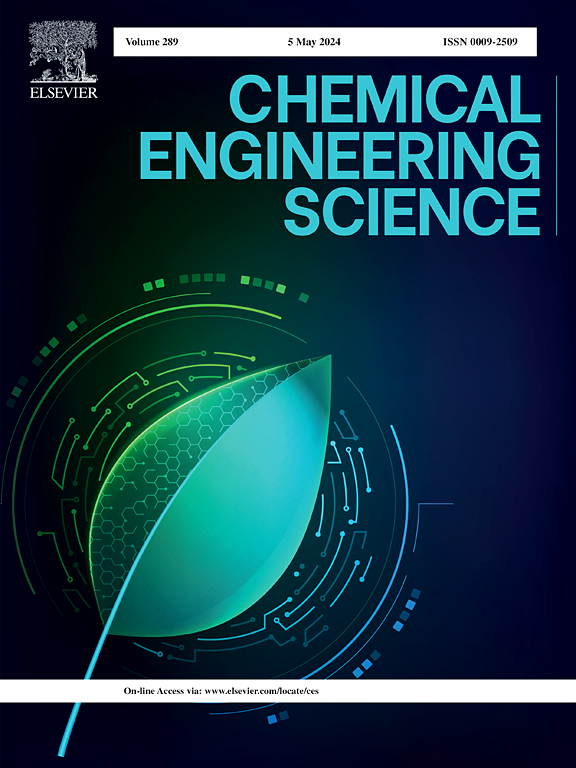Comparatively experimental investigation of micro-mixed and macro-mixed Fe-Ni oxygen carrier for mid-temperature chemical looping hydrogen production
IF 4.3
2区 工程技术
Q2 ENGINEERING, CHEMICAL
引用次数: 0
Abstract
Chemical looping hydrogen production utilizing iron-based oxygen carriers is a promising solution for efficient hydrogen production and carbon dioxide emission reduction, but most studies focus on high temperature processes (>800 °C). Mid-temperature chemical looping hydrogen production (<650 °C) is achieved using bimetallic Fe-Ni oxygen carrier. Two strategies (microscopic mixing and macroscopic mixing) are experimentally compared. Contrary to the prevailing belief that tightly mixing Fe and Ni species enhances C-H bond cracking and hydrogen generation synergistically, it is revealed that the macroscopic mixing improves the mid-temperature reactivity with CH4. The CH4 conversion for the macroscopic mixing exceeds 90 %, alongside high purity hydrogen production from steam oxidation. Additionally, the experimental results about varying NiO percentages indicate that while a higher NiO percentage increases the CH4 conversion, it inversely affects fuel (CO and H2) selectivity. We propose and verify the synergistic mechanism of physical mixing, where the micron-level separation between NiO and Fe2O3 powders prevents active phase interaction. Therefore, H2 from nickel-catalyzed CH4 cracking can deeply reduce Fe2O3, and the resulting H2O can gasify the deposited carbon, thus dynamically regenerating nickel and generating H2. Our study consolidates the potential of the chemical looping hydrogen production method with mid-temperature operation and provides novel perspectives on the design of the industrially tailored Fe-Ni oxygen carriers for the processes.
微混合与宏观混合铁镍氧载体中温化学环制氢的对比实验研究
利用铁基氧载体进行化学环制氢是一种很有前途的高效制氢和减少二氧化碳排放的解决方案,但大多数研究都集中在高温过程(>800℃)。采用双金属铁镍氧载体实现了中温化学环制氢(<650℃)。实验比较了两种混合策略(微观混合和宏观混合)。与普遍认为的Fe和Ni紧密混合能促进C-H键裂解和产氢的观点相反,宏观上的混合提高了与CH4的中温反应性。宏观混合的CH4转化率超过90 %,同时蒸汽氧化产生高纯氢。此外,不同NiO百分比的实验结果表明,虽然较高的NiO百分比提高了CH4转化率,但它对燃料(CO和H2)的选择性有相反的影响。我们提出并验证了物理混合的协同机制,其中NiO和Fe2O3粉末之间的微米级分离阻止了活性相的相互作用。因此,镍催化CH4裂解产生的H2可以深度还原Fe2O3,生成的H2O可以气化沉积的碳,从而动态再生镍并生成H2。我们的研究巩固了化学环制氢方法在中温操作中的潜力,并为该工艺的工业定制铁镍氧载体的设计提供了新的视角。
本文章由计算机程序翻译,如有差异,请以英文原文为准。
求助全文
约1分钟内获得全文
求助全文
来源期刊

Chemical Engineering Science
工程技术-工程:化工
CiteScore
7.50
自引率
8.50%
发文量
1025
审稿时长
50 days
期刊介绍:
Chemical engineering enables the transformation of natural resources and energy into useful products for society. It draws on and applies natural sciences, mathematics and economics, and has developed fundamental engineering science that underpins the discipline.
Chemical Engineering Science (CES) has been publishing papers on the fundamentals of chemical engineering since 1951. CES is the platform where the most significant advances in the discipline have ever since been published. Chemical Engineering Science has accompanied and sustained chemical engineering through its development into the vibrant and broad scientific discipline it is today.
 求助内容:
求助内容: 应助结果提醒方式:
应助结果提醒方式:


